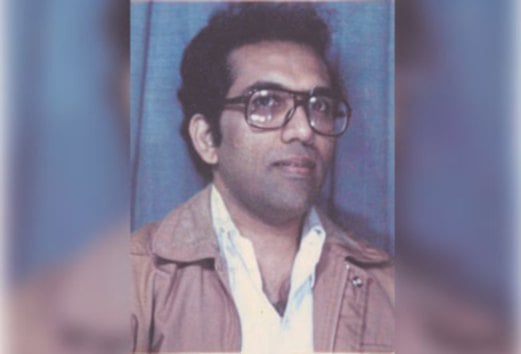
LONDON: The ashes of Malaysian nurse, Oh Kar Eng, a follower of convicted former Maoist cult leader, Aravindan Balakrishnan, have been found in a green jar, among more than 2,000 items in storage.
The ashes were found during a police search, and friends are asking that they be returned to the family.
It is understood that the police are considering reopening investigations into Oh’s death in 2004, and that of another follower, Sian Davies, who died in 1997.
Oh, who came to do a nursing course in London in the 1960s, became a staunch supporter of Bala’s political campaigns; distributing leaflets and organising talks.
She lived in the collective with Bala, his wife Chandra Pattni and a few others, including student Siti Aishah Wahab, now 71.
According to Scotland Yard, Oh, who died when she was 55, hit her head on a cupboard and died from “massive internal bleeding”.
It was reported that she died of natural causes and homicide had been ruled out.
Davies, who was Bala’s lover and the mother of one of the women who brought charges of cruelty and false imprisonment against him, died from a fall from a window. An open verdict was recorded after an inquest.
Oh’s name was mentioned several times during the three-week trial of Bala, 75, who was known as Comrade Bala to his followers, significantly by Bala’s daughter during her evidence.
Singapore-born solicitor Tan Wah Piow, who attended the trial at Southwark Crown Court, said: “The evidence which emerged during the trial was incidental, from Bala’s daughter who said there was a loud bang, then lots of blood, an ambulance was called, followed by death. A report mentioned her hitting her head against the wall cupboard.
“Having heard the evidence at the trial, I am of the view that the British police ought to investigate the circumstances leading to Oh’s death. At the time of her death, Bala, Chandra, Aishah, Josie and Fran (daughter, not her real name) were living with Oh. Given the violence that went on in the collective, and with two deaths involving injuries to the head, I have reason to believe the whole truth is yet to be told to the coroner about the circumstances leading to Oh’s death.
“At least we know, as a fact, that in Davies’ inquest, the coroner was misled by a member of the collective into believing she had no children. What lies were fed to the coroner in Oh’s case, we do not know,” he said.
At Davies’ inquest, it was reported that she did not have any relatives.
Bala was said to have told members of his collective that Oh, too, did not have any relatives.
Tan, and his wife, Beng Lan Chew, were contacted by Oh’s friends who had been concerned about her after having lost contact with her since the 1970s.
When the story broke in October 2013, and the police went to the house they were living in, in south London, a video clip appeared in the British media showing Oh pushing a woman in a wheelchair.
It was during the trial that Oh’s death came to light, as did the existence of her ashes.
Bala had been convicted of 14 out of 16 charges, including rape, sexual assault, cruelty and false imprisonment. Three women gave evidence that helped convict him; one was his daughter from an affair with Davies; another was a Malaysian nurse who was raped and sexually assaulted 32 years ago, as well as another woman.
All could not be named due to legal reasons.
Before the unravelling of the bizarre case that had exposed a life of brainwashing, manipulation, sexual violence and invisible handcuffs, it was generally believed that Aishah was the only Malaysian-born member in the collective.
Bala was arrested only when another Malaysian nurse and another woman came forward to press charges against him.
The other woman who was taken away by the police on Oct 23, 2013, with Aishah and Aravindan’s daughter, was Josephine Herivel, who was instrumental in helping with the escape. However, Josephine, who was referred to as Josie during the trial, as well as Aishah, were not called as witnesses.
Josie, who attended the hearing shouted, “You are sending an innocent man to prison” when the verdict was delivered.
Although Tan and Beng did not know Oh personally, they had seen Aishah distributing leaflets at the University of London campus in the 1970s.
From information received from Oh’s friends, Tan gathered that Oh and Aishah were in the Mass Movement led by Bala up to 1972.
Oh was assigned to recruit nurses in the East end of London, and visited nurses in Hackney hospital, and Bernard Green hospital (now closed).
“A nurse who knew her then, said she was a gentle person, about 152cm, slim and plain looking. She went round with another colleague visiting Malaysian nurses, handing out leaflets and encouraging them to attend political meetings. She would assign one or two nurses in each hospital as her contact person.”
Oh was tasked with recruiting nurses, while Aishah’s role was to recruit students.
Oh’s friends, who did want to be named, said that by 1973 or thereabouts, Oh had stopped going to the hospitals, along with her colleague from the Mass Movement who used to accompany her. The Mass Movement came to an abrupt end.
Malaysian nurses in the East end hospitals whom she recruited were surprised at the time that she disappeared without a word.
“When the nurses formed their Malaysian Nurses Society in 1975, holding events in Malaysia Hall at Bryanstone Square, there was no sign of Oh or Aishah,” he said.
According to friends, they were shocked, when in 2013, they saw TV clips of a woman shouting at the police, and another of her pushing a woman in a wheelchair, looking as she had looked in 1973.
Her friends hoped the ashes could be returned to the rightful owner.
“The family had been lied to by Bala who wanted to keep the ashes as his trophy. This is disgusting. It is important for the family to know that by 2000, she had been subjected to so much physical and psychological abuse by Bala, that like the rest of the women, she must have lived in fear she would die if she left the collective.”
“We hope the ashes can be returned to her family and have its final resting place,” a friend told Tan.
